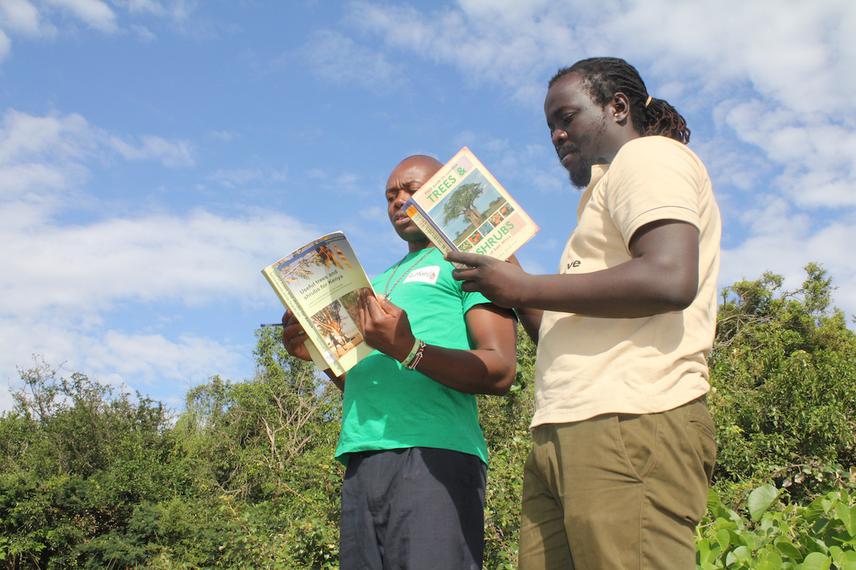Moses Odhiambo Abonga
Other projects
15 Nov 2017
Connecting Local Baseline Knowledge for Conservation of Ramogi Hill Forest: A Collective Action of Indigenous Community
This project aims at integrating community-based monitoring Reporting and Verification (MRV) of forest resources with remote sensing techniques. This process will provide the gap that exists between the existing national forest monitoring system and the requirements of the MRV system and eventually REDD+. Data coming from communities can support monitoring deforestation, degradation and for measuring forest enhancement, as well as for independent verification of forest carbon estimates and therefore improving the detail and accuracy of forest monitoring.

At the top of Ramogi Hill, identifying trees using vegetation guide books.
I. Mapping of Ramogi Hill Forest and the specific areas considered for the community forest program, with general topography, and local climate. This will be the inaugural baseline work on the forest which will contribute greatly to other future conservation work. Furthermore, mapping activities will provide the locals with an opportunity to engage and feel part of the management and protection of the forest.
II. The project will provide critical information about the diversity of tree species growing in the forest, abundance of each species, and current forest management practices (both good and bad). Furthermore, the role of each tree species in the local livelihood strategies will be complied and documented. Additionally, information about what timber species are being sold, approximate volumes traded, supply chain maps with information on buyers and local intermediaries. Some social aspects of tree management that will be assessed include Which trees do people commonly grow and why? How are the trees used and what are preferred timber and charcoal tree species and why?
III. Even though much has been said about the community participation in the management of Ramogi forest, little has been documented and therefore there is need to bridge this information gap. Setting up of a Ramogi Forest Working Group (RFWG) that will bring together different community members (user groups) and stakeholders who have vested interest in the conservation and preservation of Ramogi Forest. This will be the first working group that will integrate community members, NGO’s, county officials and schools. It is becoming increasingly apparent that sound and sustainable environmental management will only be realized through involvement of the local communities in both identification of the problems as well as sustainable solutions.